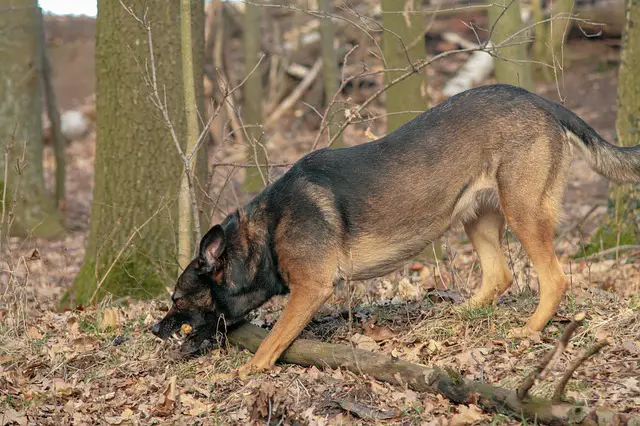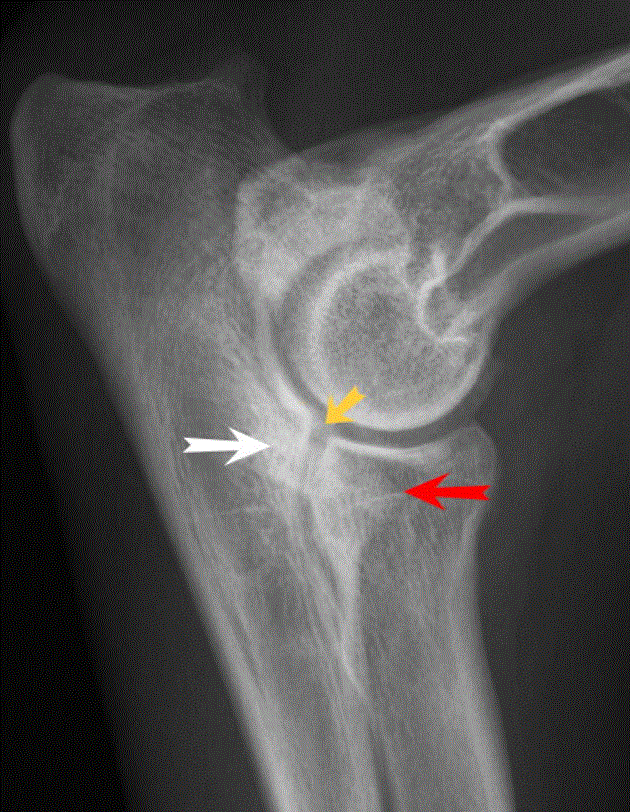The Belgian Malinois is often confused with the German shepherd, but with a closer look, there are differences in origination and physicality. The Belgian Malinois originated in Belgium, while the German shepherd hails, of course, from Germany.
They are both purebred dogs but the Belgian Malinois is actually one of four Belgian shepherd varieties along with the Belgian Laekenois, the Groenendael, or Belgian sheepdog, and the Belgian Tervuren.
In physical appearance, the German shepherd is a heavier and larger dog and the Malinois is smaller but has more energy. Both dogs were bred for herding and are very active.
If you are thinking of getting a Malinois, you wouldn’t want that energy and exuberance sapped by a condition that could stop them in their tracks.
Hip dysplasia is the most well-known of debilitating disease striking the Belgian Malinois and German shepherd alike, but there is another, the lesser-known condition of elbow dysplasia.
In this post, I will give you information about elbow dysplasia and also Belgian Malinois elbow dysplasia symptoms as well as elbow dysplasia, in the dog, treatment.

For your dog’s vitamin supplement, food, toys, or other dogs product please visit the Health Extension website.
What is Elbow Dysplasia?
Elbow dysplasia is one of the most widespread causes of lameness in younger dogs. Abnormalities are exacerbated by the growth of your dog’s frame or skeletal bones. Growth causes the condition to worsen and the elbow joint becomes malformed and even begins to deteriorate.
Hip dysplasia occurs in the hind legs of canines while elbow dysplasia can be found in the front legs. The elbow joint is made up of the ulna, radius, and humerus. At the top of the ulna is a bone called the anconeal process.
Up until six months of age, in dogs, the anconeal process is not yet joined with the ulna. The bone helping to form the curved portion of the ulna is coronoid and after six months the anconeal process begins to mesh with the ulna.
Elbow dysplasia occurs when this conjunction does not happen and can cause the development of osteoarthritis.
Elbow dysplasia is actually a group of congenital diseases that cause cartilage and bone damage in canines.
It can be found in smaller dogs, but mostly in larger breeds such as Bernese Mountain dogs, German shepherds, Labrador and Golden retrievers, Great Danes, Irish water spaniels, Rottweilers, and the Belgian Malinois.

Belgian Malinois Elbow Dysplasia
Belgian Malinois can suffer from elbow and hip dysplasia. Hip dysplasia is the disease heard more often but elbow dysplasia can be just as serious.
Elbow dysplasia is a term for three different elbow conditions and is diagnosed when your pup suffers from one, more than once, or all three of those listed below.
- Fragmented Coronoid Process (FCP)
FCP or fragmented coronoid process is the type of elbow dysplasia most seen in dogs. Cartilage or bone is broken from the ulna in a section or shard. It can move around or stay in place and be large or small.
- Osteochondritis Dissecans (OCD)
OCD or Osteochondritis Dissecans occur when dogs are young, between six months and two years of age. Lameness will be noticed in one or both front legs due to diseased cartilage as it is developing.
- Un-united anconeal process (UAP)
UAP or un-united anconeal process occurs when that bone at the top of the ulna, the anconeal process, does not mesh together with the ulna as your pup grows.
This causes the anconeal process to be loose and never unite with the ulna and in turn, leads to inflammation, an unstable joint, and eventual osteoarthritis.
Causes of Elbow Dysplasia
Elbow dysplasia is a disease that can occur in young growing dog breeds such as Belgian Malinois. The cause of elbow dysplasia has a few factors, one being that it is genetic in nature.
It is often found in many members of the same canine family. Responsible breeders should have all of their breeding dogs screened for elbow dysplasia and not breed any that show symptoms or that are positive for the genes.
Environmental factors also contribute to the development of elbow dysplasia. As a puppy and while growing, your pup should be fed healthy high-quality dog food that has all of the necessary vitamins and minerals for proper growth.
At the same time, proper portions should be followed, so as not to overfeed. Excess weight puts a strain on growing bones.
Lastly, exercise is great for growing puppies, but too much exercise when bones and cartilage are still developing can cause damage, especially too much jumping and running. A happy medium needs to be achieved for balanced exercise in your Belgian puppy.
To check your Belgian Malinois health status or their DNA, please visit the Embark vet website for all the help you may need
Belgian Malinois Elbow Dysplasia Symptoms
Symptoms of elbow dysplasia in your Belgian Malinois can begin as early as four to ten months. In others, symptoms may not begin to show until adulthood with the beginning of osteoarthritis. Symptoms are listed below.
- Lameness – Lameness can be chronic or acute and mild or severe. Some types of exercise aggravate it and the lameness never gets better with rest.
- Stiffness
- Pain
- Muscle loss
- Joint swelling when palpated
- Pain when flexing or extending the leg
- Grinding or cracking of bone on bone can be heard, most often in older dogs
- Rising to a stand position is difficult
- Sitting or lying is difficult
- Interest in play or exercise wanes
- Very reluctant for walks, play, etc. when both elbows are affected
Diagnosing Elbow Dysplasia
If you or your veterinarian suspects elbow dysplasia in your Belgian Malinois, your veterinarian will perform a clinical examination and then order radiographs, also known as x-rays.
Your veterinarian will want to observe your pup as they walk and check the elbows for inflammation and pain when they are bent and then extended. X-rays may show small fragmented bones, the anconeal process un-joined from the ulna, or signs of osteoarthritis.
Your Belgian Malinois veterinarian may also refer you to an orthopedic surgeon. The orthopedic doctor may want more in-depth diagnostic testing such as CT or MRI scans.
Elbow Dysplasia in Dogs Treatment
Treatment of elbow dysplasia will depend on the primary cause and how severe the disease is. Management medically may be suggested and in many cases, surgery is recommended. If a case of elbow dysplasia is mild it may be managed by:
- Anti-Inflammatory Drugs
- Physical Therapy
- Lifestyle changes like a diet if the pup is overweight
- Glucosamine/chondroitin supplements decrease inflammation and lubricate joints
- Exercises for a range of motion
- Swimming
If surgery is recommended, it may be arthroscopic surgery which is a minimally invasive surgery. In this type of surgery, a small incision is made and an endoscope or small camera is inserted.
With small instruments, bone fragments may be removed or the surgery may involve the reattachment of the anconeal process to the ulna. There is a quicker recovery time with arthroscopic surgery.
In severe cases, a total elbow replacement may be the course of action with general surgery.
Most dogs do well and go on to live active life. If a case is very severe, even elbow replacement may not offer any benefits.
When considering a Belgian Malinois or any breed of dog also put great thought and research into a responsible breeder who screens for elbow dysplasia along with other genetic diseases.
If your Belgian Malinois exhibits any of the above symptoms, have your veterinarian give them a thorough check-up and be prompt.
The sooner a diagnosis is made and treatment started, the more successful it will be having your pup on the road to recovery quickly.